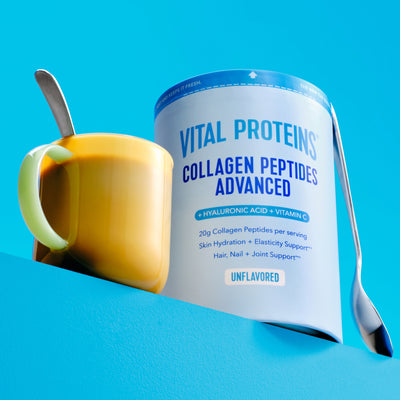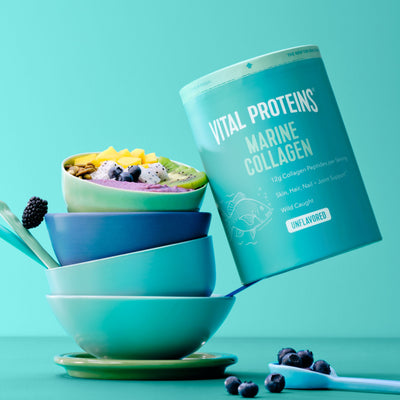Whether Vinny from the Jersey Shore, also known as the @ketoguido, first introduced you to the keto diet or your BFF finally convinced you to try counting your macros, one thing’s for sure: Fad diets are everywhere. Feel like you can't keep up with the latest offering? And, you're probably wondering if fad diets are actually worth your time. Well, you're in luck! We're here to give you the details on keto, macro counting and more fad diets.
Vital Note: This article has been made available for informational and educational purposes only. It is not intended to be a substitute for professional medical advice, diagnosis, or treatment. Always seek the advice of your physician or another qualified health provider with any questions you may have regarding a medical condition. Your licensed healthcare professional can best provide you with the diagnosis and treatment of any medical condition and assist you as well in deciding whether a dietary supplement will be a helpful addition to your regimen.

First, what are fad diets?
Fad diets are often suggested as a quick fix for weight loss. Typically, they are a diet change that you implement for a short period of time and usually involve restricting or limiting certain food groups. And it's important to note before making a drastic change to your diet, you should consult with your doctor.
Why is a fad diet bad?
Fad diets often label foods as "good" vs. "bad" or are based on elimination of necessary food groups (think carbs, healthy fats, protein or fruits). The truth is, it's necessary to fill your plate with all food groups, according to the American Heart Association (AHA) and Harvard School of Public Health Department of Nutrition, among others. This restriction can lead to a harmful relationship with food. Since most fad diets are only for the short term rather than a lifestyle change they don’t typically help you maintain weight loss and may even set you up for health problems in the future, according to the Cleveland Clinic.
Overall, it's best to eat everything in moderation. Assess your diet: are you eating out frequently or eating many sugar-packed treats throughout the day? A good place to start eating healthy is to replace these sugary snacks with healthier options, such as fruit, and switch from daily drive-thru meals to once weekly meal prep when you know you’ll be too busy to cook daily.
What are the popular fad diets?
Below, we've outlined the most popular fad diets you may have heard of.
KETO DIET
According to Cynthia Sass, MPH, RD, a person following keto generally consumes a diet that's 75-90 percent fat, 5 percent carbohydrates and the remaining percent protein. High fat, low carb and moderate protein is the magic ratio behind the keto diet. An example meal might include avocados, eggs, olive oil and bacon. Bread and grains are a big no-no. The idea behind keto is that once the body is deprived of carbohydrates, the body will begin to break down fat to convert it into energy. This is known as reaching ketosis. For a full breakdown of the keto diet, check out our Lively blog post.
Related Articles
INTERMITTENT FASTING
Intermittent fasting is a method of scheduling caloric intake. Matthew Taylor, RD, Ph.D, previously told Lively that intermittent fasting is a broad term used to define a period of time in which caloric consumption is restricted to a small intake or no intake at all.
There are many ways to divide up the schedule but fasting for 16 hours and eating within an 8-hour window is one example. Realistically, this method isn't very sustainable since most people's lives consist of after-work happy hours, snacking during the day and fueling for workouts.
SATIATING DIET
Unlike most traditional diets, the satiating diet encourages participants to fill up on nutrient-rich foods. We're talking foods that are high in protein and fiber as well as consuming lots of fruits and veggies. Seriously, nothing is off limits. The satiating diet is not about setting restrictions, but about choosing healthy foods that will help you feel satisfied.
ARCHETYPE DIET
Is there a connection between self-worth and eating patterns? If you ask Dana James, a board-certified nutritionist, functional medicine practitioner and cognitive behavioral therapist, the answer is yes. In her book, The Archetype Diet, James says that before determining what foods you'll be adding to your plate, you first must learn why you eat (or overeat). It is only after coming to terms with these two factors that you can begin an enlightened relationship with food.

If It Fits Your Macros (IIFYM)
Counting macronutrients – or macros – is one of the newest diet trends in the wellness space. (See Lively’s guide on counting macros here.) Popularized by the hashtag #IIFYM (If It Fits Your Macros), it calls for users to track their macro intake, consisting of fats, carbohydrates and protein. Of course, the number of macros you’re consuming goes hand-in-hand with whether you’re looking to lose or maintain your weight. It has less to do with the types of foods you're consuming (one quick scan of the hashtag will pull up pictures of ice cream cones and French fries) and more with how much of each macronutrient you’re eating. Apps such as MyFitnessPal make it easy to keep track of macros and calories.
PALEO
Also known as "the caveman diet," the paleo diet consists of eating foods that can be hunted and gathered. This would leave us with a diet rich in lean protein, fruits, vegetables, seeds and nuts. Processed foods, sugar and all grains would be removed. Sound familiar? You may be wondering what the difference is between keto and paleo. Paleo does not place emphasis on macronutrients while keto does. The keto diet restricts the majority of fruits and legumes, because there is one goal in mind: to reach ketosis. There aren’t as many limitations when following a paleo diet; it still allows participants to eat from whole food groups.
The bottom line: It's important to eat food from all food groups in moderation, limit processed sugars and trans fats and check with your doctor before making changes to your diet.



















